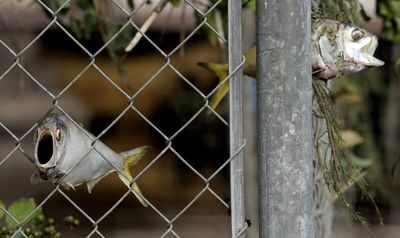Crews still assessing damage after hurricane

HOUSTON – Thousands of victims of Hurricane Ike settled in at shelters for what could be weeks, and others waited wearily in line for food, water, ice and gasoline Monday as it became increasingly clear the disaster along the Texas coast would be measured not by its death toll but by the misery it spread.
Almost three days after the storm steamrolled the coast, the extent of the damage was still coming into focus, with rescue teams finally reaching some of the hardest-hit and most inaccessible places, including Bolivar Peninsula, a resort on Galveston Bay where entire neighborhoods were obliterated. Homes were wiped from foundations and stilts jutted up from the sand – but their occupants were living, buoying the spirits of rescue crews.
While the number of confirmed deaths was still remarkably low – most of the 39 deaths blamed on Ike were outside of Texas – the distress was considerable.
Nearly 37,000 people were in shelters, and there was no word on when those living in the most devastated towns, such as Galveston, might return. An estimated 2.2 million people in Texas alone remained without power. Many service stations had no gasoline or no electricity to pump it. With no running water, some residents were dumping toilet waste directly into the sewers. Major highways were still under water.
There were also signs of progress. Houston assistant fire chief Rick Flanagan said emergency calls dropped dramatically Monday afternoon. Houston mayor Bill White rescinded a mandate to boil water, citing tests that found no widespread contamination. White also said residents of the Clear Lake area, which was under a mandatory evacuation order, could safely return home.